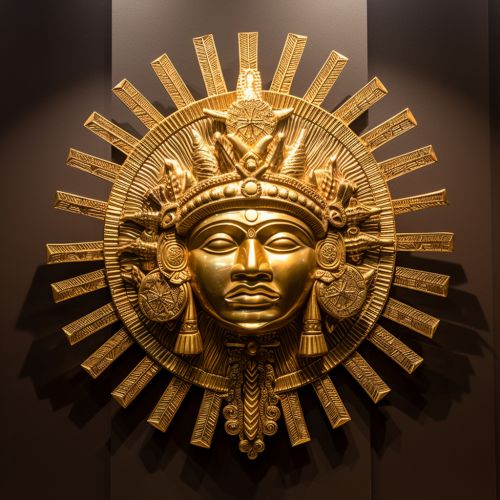Inti
Origins and Historical Significance
Inti, the Incan Sun God, was a major deity in the Incan pantheon and was considered the ancestor of the Inca people. The Incas believed that Inti, the Sun, was the progenitor of their royal lineage and granted their rulers divine authority. This belief was central to the Incan concept of divine kingship and theocratic rule.


Inti was commonly depicted as a golden disk with a human face, a representation that was often used in Incan art and architecture. The most famous depiction of Inti is probably the golden sun disk in the Temple of the Sun in Cusco, the religious and administrative center of the Incan Empire.
Worship and Rituals
The worship of Inti was a state religion in the Inca Empire and was promoted by the Incan state. The Sapa Inca, the ruler of the Incan Empire, was considered the "son of the sun" and was the main officiant in state rituals dedicated to Inti. These rituals often involved the sacrifice of animals, and sometimes humans, to appease Inti and ensure the continuation of the sun's journey across the sky.
One of the most important festivals dedicated to Inti was the Festival of the Sun, which was held annually during the winter solstice. This festival involved a series of dances and sacrifices, including the sacrifice of llamas, to honor Inti and to ensure a good harvest in the coming year.
Influence on Incan Society and Culture
The worship of Inti had a profound influence on Incan society and culture. The Incas believed that their rulers were direct descendants of Inti, which gave them a divine right to rule. This belief was used to legitimize the authority of the Sapa Inca and to unify the diverse peoples of the Incan Empire under a common religious ideology.
The influence of Inti can also be seen in Incan art and architecture, which often featured solar motifs. The most notable example of this is the aforementioned Temple of the Sun in Cusco, which was dedicated to Inti and was the most important religious site in the Incan Empire.
Legacy
Despite the fall of the Incan Empire in the 16th century, the worship of Inti has left a lasting legacy on the cultures of the Andean region. Many contemporary Andean communities still celebrate the Festival of the Sun, albeit in a syncretic form that combines elements of Incan and Christian traditions. The image of Inti also continues to be a potent symbol of Andean identity and heritage.
